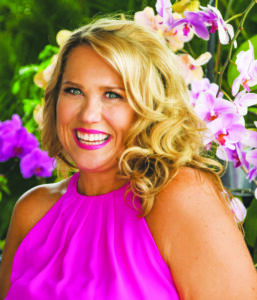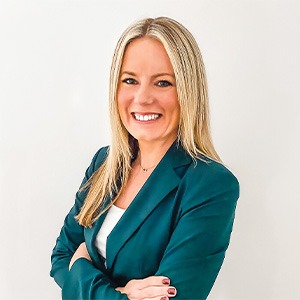Time to talk about meaningful strategies to achieve work-life harmony
In March, when Senator Bernie Sanders introduced the Thirty-Two Hour Workweek Act, proposing financial incentives for scheduling employees only four days a week for the same pay, many in meeting professional world giggled at the notion. Event professionals are famous (some would say infamous) for bragging about our long days and lack of time off.
But what if we took the notion of building manageable careers more seriously?
In Smart Meeting’s ongoing journey to inspire meeting professionals with the latest tips for elevating the event design process, we worked with the AI app InVideo to bring our content to visual life and allow all viewers to accessibly enjoy content in video form. We hope you enjoy. Please consider following our YouTube channel for more weekly tips and trends for meeting planners.
Sanders had some good points. The world has changed since the 40-hour workweek was set by the Fair Labor Standards Act in 1940. We are more than 400 percent more productive, according to statistics from the Federal Reserve Bank of St. Louis. France already operates around a 35-hour standard workweek and is considering reducing to 32 hours. A study based on the behavior of 3,000 employees at 60 companies in the United Kingdom found that workers on reduced schedules were happier and more productive with participating companies realizing a 35% average increase in revenue.
That got us thinking. What would it take for meeting professionals to reap the benefits of a more sustainable schedule? If not 32 hours, how about 40? We know. It’s a radical idea.
But what would it really take to achieve work-life harmony, if not balance? Would we see less burnout, more interest in entering the profession and more opportunities for creative initiatives?
The Smart Meetings editorial team explored the options—from harnessing the power of AI and partnerships to behavioral and psychological shifts and laid them out for you in the pages that follow. The goal is to start a conversation. What are you doing to manage your time, and what do you need to reach your calendar goals? Join the discussion on LinkedIn.
Together, we can start a sustainable events career movement.
A Case Study in Setting Boundaries: Kate Patay

For Terramar DMC Vice President of Global Engagement Kate Patay, shifting to a four-day workweek was a survival strategy back when she was running her own consulting business. “I felt like a lot of times people push a little too far and ask for too much,” she admitted. “I started the four days a week to prevent burnout and start to set some boundaries. I would rather put in a solid, productive 32 hours than a mediocre 60, and I tell my staff the same thing.”
Her rationale was that clients weren’t going to get the best possible version of her if she was constantly giving. Narrowing down the working hours required a mindset shift that she said she might not have been able to accomplish when she was younger. “I had to learn that busy is not a badge of honor,” she said. “I just don’t buy into the idea of having to have face time sitting at a desk to prove you are working. I’m proud of the fact that I can do my job in 32 hours, that I have the experience and the knowledge that I can get the work done without having to look busy for 60 hours.”
Read More: Supporting Employee Mental Health in the Workplace: Practical Tips for Meeting Professionals
“I would rather put in a solid, productive 32 hours than a mediocre 60.”
It started for Patay by thinking about what is most important to her: family, her husband and spending quality time when he is off on Sundays and Mondays and she is often traveling. Sound familiar? “If I’m home, I absolutely take Sunday and Monday with him, and I communicate that clearly with staff, clients and anyone in the industry. I let them know that expectation up front, but I also let them know how to reach me if there is an emergency,” she said. Otherwise, she suggests that people send an email, and as soon as she is back at her desk on Tuesday morning, she will respond.
Another expectation-setting move is that she explains to clients that when she is with you, she is giving you 100% of her attention, but also that she is doing the same for other clients when she is with them. So, there might be a slight delay before she shines all that light back on you. “I hope they celebrate and appreciate that; then I’ll be there for them the same way. That is the benefit,” she explains.
The good news is, most clients understand, and she has had very little pushback. One of the reasons the realistic expectations work is that Patay is not rigid or judgmental about the perceived infringement on her boundaries. In busy season or when at a big event like Dreamforce, sometimes she still logs three weeks of travel at a stretch. But then she gives herself flexibility when she returns—to recover far from email and phone.
Did we mention Patay lives in Reno, Nevada, with access to beautiful, restorative Lake Tahoe? “Life is not always perfect. Sometimes you have to adjust and give yourself and those around you some grace,” she said. “It’s like a diet. If you get off track trying to trim a few hours off of each week, don’t beat yourself up. Try again next week, and that forward momentum will help you reach your goal.
Schedule Recovery Time: Neen James
 In talking to event leaders who have found a way to make space for “me time,” one common tool was the power of the calendar. Neen James, a popular keynote speaker on luxury lifestyles and author of the book “Attention Pays: How to Drive Profitability, Productivity and Accountability” suggested taking a strategic approach. “Always schedule recovery. As a busy meeting professional, you give so much of your time, attention and energy before, during and after your events! Managing (and recharging) your energy is vital!” she said.
In talking to event leaders who have found a way to make space for “me time,” one common tool was the power of the calendar. Neen James, a popular keynote speaker on luxury lifestyles and author of the book “Attention Pays: How to Drive Profitability, Productivity and Accountability” suggested taking a strategic approach. “Always schedule recovery. As a busy meeting professional, you give so much of your time, attention and energy before, during and after your events! Managing (and recharging) your energy is vital!” she said.
Recovery could look like time offline, self-care or a vacation. The tool that could make that vital break possible? A creative out-of-office message. Create a fun, informative message that includes details of your absence, who to contact while you are away and when you will return. “I have clients who email me knowing I am away, just to see what my out-of-office message says! Make it fun. Make it an extension of your personal brand and set free the need to be connected all day, every day,” she said.
Others suggested putting office hours in their signature line, so everyone is on the same page. Transparency and humor are powerful tactics for setting the stage for a manageable schedule.
James also plans for a full month away from the business every winter to recharge, catch up on reading, take afternoon naps, journal, think and create. She stays off email and minimizes social media. How does she do it? “Not everyone has the luxury of taking a month off, but perhaps you start with a day, build up to a weekend, then try a week,” she suggested. Scheduling recovery time for a sabbatical allows the creative spirit to be rejuvenated. “In the busyness of our daily obligations and delivering for so many people and stakeholders, sometimes we are so busy ‘doing’ we don’t get time for ‘being’. That includes being creative, innovative, adventurous and curious,” James observed.
“In the busyness of our daily obligations and delivering for so many people and stakeholders, sometimes we are so busy ‘doing’ we don’t get time for ‘being’.”
Those are probably the things that could allow us to come back more adventurous than ever.
An International Take: Lorenzo Pignatti
 America has its own standard of what a typical workweek should look like, but what about other countries? Are there lessons or models meeting profs can learn from? Smart Meetings spoke with Lorenzo Pignatti, DMCP, president of Terra Events, a group of Destination Management Companies (DMCs) in Italy, Spain, Portugal and France. Pignatti, based in Milan, gave us insight into the 32-hour workweek from a European perspective and how European DMCs with clients around the world handle the discussion.
America has its own standard of what a typical workweek should look like, but what about other countries? Are there lessons or models meeting profs can learn from? Smart Meetings spoke with Lorenzo Pignatti, DMCP, president of Terra Events, a group of Destination Management Companies (DMCs) in Italy, Spain, Portugal and France. Pignatti, based in Milan, gave us insight into the 32-hour workweek from a European perspective and how European DMCs with clients around the world handle the discussion.
The Challenges
While Pignatti favors a shortened workweek in theory, he does have his reservations. As projects reach the final stages, tasks are more pressing and tensions are higher, he notes. So, while he believes the earlier stages of a project can be handled with a three-, four- or five-day workweek, he thinks as deadlines approach, a commitment to something like a 32-hour workweek might be unsustainable.
Read More: The Savvy Meeting Prof’s Toolkit for Bringing International Conferences Home
“It gets a little bit more complicated a few weeks before the start of the event,” says Pignatti. “The daily communications, changes, updates and things.”
Based on his experience in Europe and elsewhere in the world, Pignatti suggests a possible approach to alleviating planner burnout even if it isn’t formally reducing work hours. “The solution would be to share all projects at all times,” he says. He acknowledges this workaround could be difficult to adopt. “That would mean changing radically. All projects would be shared at all levels, so that everybody can complement and jump in whenever needed—we need communication between everybody.”
Internationally and Culturally Diverse Staff
As a DMC with European offices and clients all over the world, Pignatti knows firsthand one way meeting and event companies can save a lot of time and stress: having a diverse staff, so no time is wasted working through cultural or language barriers.
“All projects would be shared at all levels, so that everybody can complement and jump in whenever needed—we need communication between everybody.”
“Our project managers deal with North American clients, Indian clients, and with clients in Australia, and South Africa and China, at the same time,” Pignatti says. “We have always catered to those differences, trying to assign the right project manager to the right client, to the right project and to the right culture.”
Burnout, Begone: Dr. Romie
 “The idea isn’t about working less, but that when we take care of our brain and mental health, we work more productively and efficiently.”
“The idea isn’t about working less, but that when we take care of our brain and mental health, we work more productively and efficiently.”
Dr. Romie is a board-certified physician, an award-winning wellness speaker and the bestselling author of “The Busy Brain Cure.” She works with companies and professionals to assess their “busy brains” and create a plan to heal. Her website offers a four-minute “Busy Brain Test,” which will show users, for free, their level of stress, up to and including burnout.
Why We Get Burnout
The World Health Organization defines burnout as “feelings of energy depletion or exhaustion, increased mental distance from one’s job or feelings of negativity or cynicism related to one’s job; and reduced professional efficiency.”
In a career as demanding as meeting planning, burnout can sneak up on you.
Part of this is our work culture. Dr. Romie argues it doesn’t have to be this way. “We can no longer afford to wear stress and burnout as a badge of honor. [We must] dismantle the mantra, ‘You are only as good as your last meeting.’ This attitude is fueling a stress-success cycle—making you feel like you have to live at the edge of burnout in order to succeed at this week’s goal.”
Health Impacts of Burnout
When people are chronically stressed, she continues, “The air traffic control center of your brain—the hypothalamus—undergoes neuroinflammation, which negatively affects mood, cognition and physical health.”
When people experience stress, their body engages in a fight-or-flight response. This was useful in our hunter-gatherer days, when people needed the burst in heart rate and blood pressure to protect themselves; but our bodies have not adapted to recognize that stress we experience today is not due to immediate physical danger.
In other words, every email should not feel like an emergency.
How to Beat It
“Even if you reduce your working hours by one hour a day, you are creating more space…in your brain [to] process memories and mood,” Dr. Romie says. “The idea isn’t about working less, but that when we take care of our brain and mental health, we work more productively and efficiently.”
Let’s put it this way: A 32-hour workweek is possible, because it will reduce your stress; and because it will reduce your stress, you’ll be far more likely to complete the work you would have completed in 40 hours, in 32—possibly even to a better quality. This may take easing into progressively—by even 30 minutes a day—and seeing how productivity and efficiency get a boost.
Boundaries are critical, Dr. Romie says. “Working inconsistent hours creates chaos for…your brain. Try to create a regular cadence in the hours you will be working. When you’re not working, avoid checking work emails and texts. Setting clear boundaries will not negatively impact business, but instead, create a ripple effect, reminding others to practice digital detox.”
Finding Your Rhythm—Juggling Time at Work and Home: Debbie Peterson
 “Create distinct boundaries between work and home. Dedicate specific times for professional tasks and ensure personal time is respected during nonevent times.”
“Create distinct boundaries between work and home. Dedicate specific times for professional tasks and ensure personal time is respected during nonevent times.”
Managing both work and home life is “the dance,” especially for event planning professionals who often face fluctuating schedules and high-stress environments. Achieving this requires effective time management to ensure both professional and personal responsibilities are handled appropriately.
So, what can you do? Great question! Here are some tips.
Set clear priorities: Start by clearly defining your priorities at work and home (pro tip: it’s not everything). Knowing what tasks, responsibilities and goals are most important in each area helps to make informed decisions and effectively allocate time. This clarity allows you to excel in your role while maintaining a fulfilling personal life.
Establish boundaries: It’s essential to create distinct boundaries between work and home. Dedicate specific times for professional tasks and ensure personal time is respected during nonevent times. Communicate these boundaries to your colleagues and family to support this strategy. This approach helps you stay focused and committed in both contexts.
Plan and schedule: Utilize tools like task managers or digital planners to outline your tasks, meetings and personal activities. Be realistic about how much time each activity needs and avoid overscheduling. Schedule breaks to avoid burnout. Regularly update your schedule to adapt to any changes in your priorities, ensuring you remain on track without neglecting responsibilities.
Delegate and seek support: Understand that you don’t have to manage everything alone. At work, delegate tasks where possible. At home, involve family or friends to share responsibilities, especially when in event mode, to lighten your load. Asking for help when needed is crucial for maintaining balance and ensuring all balls stay in the air.
Practice self-care: Prioritize activities that contribute to your well-being, such as exercise, relaxation or pursuing hobbies. Investing in your health boosts your productivity and resilience, vital for managing both work and personal challenges.
By implementing these strategies, event planning professionals can manage their time better and achieve a more satisfying balance between their professional and personal lives. Start by setting your priorities and planning your schedule. Remember, finding balance is not just about managing time, but also about managing your energy and well-being.
“Finding balance is not just about managing time, but also about managing your energy and well-being.”
Neurological Benefits of Pausing Work: Heather J. Crider
 Neuroperformance Coach Heather J. Crider likens being a meeting planner to being a magician at a carnival. “Juggling flaming torches while riding a unicycle, ensuring the audience is thrilled and the show goes off without a hitch!” she says. “Eventually, however, the magician must get off the unicycle and take a pause; otherwise, they risk losing control and crashing into the circus tent, causing a spectacular collapse and bringing the entire operation down around them.”
Neuroperformance Coach Heather J. Crider likens being a meeting planner to being a magician at a carnival. “Juggling flaming torches while riding a unicycle, ensuring the audience is thrilled and the show goes off without a hitch!” she says. “Eventually, however, the magician must get off the unicycle and take a pause; otherwise, they risk losing control and crashing into the circus tent, causing a spectacular collapse and bringing the entire operation down around them.”
Despite the busy workload planners face, Crider says, downtime is not just a luxury but a necessity for maintaining peak performance and mental health. Working long hours without a break will only make you less—not more—efficient. “The constant multitasking meeting planners become accustomed to can lead to cognitive overload: a condition where the brain becomes overwhelmed by excessive information and continuous demands, otherwise known as burnout,” she says. “Neuroscience reveals that our brains, particularly the prefrontal cortex, have limited capacity for sustained attention and decision-making.”
How to Achieve Downtime
Crider says downtime serves as a critical reset mechanism. “It allows the brain to process and consolidate information, clear out cognitive clutter and restore neural networks.”
“Downtime is not just a luxury but a necessity for maintaining peak performance and mental health.”
In the face of demanding schedules and tasks, she suggests declaring one day each week to unplug completely. “Commit one day to activities that are joyful, calm and peaceful.” She explains, “Engaging in various practices such as mindfulness meditation, physical exercise and hobbies can activate the brain’s default mode network, which is involved in memory consolidation and creative thinking. This activation helps rejuvenate cognitive resources, making it easier to handle complex tasks with greater clarity and innovation.”
The art of meeting planning is a constant battle between the problem and the ways to solve them. For this you need a brain that is highly adaptable—and an adaptable brain needs sufficient downtime. According to Crider, research indicates that regular breaks and restorative downtime can enhance neuroplasticity and the brain’s ability to adapt and form new connections.
As Crider puts it: “For meeting planners, this means improved adaptability, quicker recovery from setbacks and sustained high performance under pressure. Therefore, incorporating structured downtime into weekly schedules is crucial for meeting planners to manage stress effectively, boost cognitive function, and maintain high professional and personal excellence.”
Staffing Costs Need Not Be a Roadblock: Tracy Judge
 In the highly competitive meetings industry, will increased staffing costs be the roadblock that prevents planners from reaping the potential benefits of a 32-hour workweek?
In the highly competitive meetings industry, will increased staffing costs be the roadblock that prevents planners from reaping the potential benefits of a 32-hour workweek?
Tracy Judge, CMP, says no. At least not in the longer term.
Asked if she thinks an abridged workweek is even possible when the reg desk opens and it’s showtime, she says, “That’s when we get to see the planning come to life, the part we love so much. So, yes, we all get burnt out onsite. But most times, it’s a good energy. We’re not really going to be able to change the hours onsite, but we can make sure we staffed properly.”
Read More: Why Early Bird Registration Specials Don’t Work and Other Revelations from a New Maritz Study
Judge, a Smart Women in Meetings Hall of Fame inductee, is founder and CEO of Soundings, the talent platform for event and marketing professionals. Her company could fill staffing gaps left by shorter workweeks, but she’s not looking at this proposed change as a potential windfall.
“I read Bernie Sander’s bill, and it proposes keeping salaries the same but falling to 32 hours. So, if you are replacing those eight hours per week, we’re going to see a 20% increase in the cost,” she concedes. “But the thing is, if we start working as an industry now to build the infrastructure to be able to support shorter workweeks, that’s going to force the industry to really adapt to the technologies we’re not leveraging to the fullest, and force us to innovate faster. And once we do that, I think the technology efficiencies can actually offset the increased costs of labor.”
“Technology efficiencies can actually offset the increased costs of labor.”
More significant, in Judge’s view, are the potential human benefits. “One of the most obvious is greater retention in the workforce,” she says, “particularly with women.” More time off would make it easier to juggle work and motherhood. “And the other interesting piece to this is, we have a huge inequity with women in leadership roles compared to men even though our industry is female-dominated. Shorter workweeks would allow women to stay in the workforce while they’re raising children. And then they can accelerate faster into leadership roles.”
Lighten the Workload with Hotel Partnerships: Shady Ibrahim
 When we consider just how jam-packed a planner’s schedule can get, the seemingly endless list of tasks to juggle, from creating content, managing registration and logistics, booking speakers and so much more—not to mention the tricky task of incorporating the many different client and stakeholder priorities through all of this—it’s hard to imagine how planners could get it all done within 32 hours each week.
When we consider just how jam-packed a planner’s schedule can get, the seemingly endless list of tasks to juggle, from creating content, managing registration and logistics, booking speakers and so much more—not to mention the tricky task of incorporating the many different client and stakeholder priorities through all of this—it’s hard to imagine how planners could get it all done within 32 hours each week.
That’s where strong partnerships with hotels come in. Shady Ibrahim, director of event management at Anaheim Marriott in Southern California, leads his hotel events team with one central focus: ease of planning. As Ibrahim explains, “We begin the planning process by asking our customers, ‘What can we take off your plate?’”
Often the first-encountered gateway to a destination after the airport, hotels are a critical resource for much more than the ballroom and beds. By tapping into a hotel’s existing contacts, planners can cut out hours of sleuthing out the very best of the destination, as well as the time-consuming process of coordinating logistics. Anaheim Marriot, Ibrahim says, positions itself as a one-stop shop for local vendors and suppliers.
“We begin the planning process by asking our customers, ‘What can we take off your plate?’”
“We understand the value of being the liaison who connects our customers with the destination, limiting the number of contacts to communicate with. We leverage our partnerships with local vendors to maintain an updated vendor services menu that enables us to source and contract services on behalf of our customers,” he says.
The key to any strong partnership is the ability to communicate and coordinate in a timely manner—an especially important detail for planners, who may be based hundreds, if not thousands, of miles away. Ibrahim says his staff holds itself to a standard of responding to, or at least acknowledging, correspondence within four hours to establish trust and build respect for their partnership.
“Once trust is established, [planners] recognize that we share a mutual goal of executing a successful event,” he continues. “Then they feel confident in our ability to handle different aspects of the planning process on their behalf. We continue to offer our support every step of the way, giving them the ability to leverage our experience and familiarity with our operation to elevate the attendee’s experience.”
Save Time with Tech: 3 Ways

The development of AI-based tools is unrelenting, and the really good news is that they offer up many ways to minimize monotonous tasks, freeing planners for more strategic efforts and promising them a respite from 40+ hour workweeks.
Here is a trio of such solutions.
Creating a structured agendas to focus everyone’s attention. “Meetings need to be structured,” says Ted Selker, renowned Speak About AI speaker and innovator in strategic technology development and invention. “Simple generative AI prompts can help structure and choreograph inspired agendas. AI can be used to keep track of details [and] consider details that haven’t been considered, as well.”
Read More: The Unusual Irony of AI
Automating attendee management and beyond. This begins by managing registrations prior to an event, according to Roman Yampolskiy, who is an author and an associate professor at University of Louisville. He is known for his work in exploring the potential risk associated with superintelligent systems. “AI can also streamline venue selection through capacity analysis, manage logistics by optimizing room layouts and schedules based on attendee numbers, and even handle real-time feedback to adjust meeting components for better engagement. Furthermore, AI tools can aid in budget management by tracking expenses and suggesting cost-effective options,” he says.
“AI can be used to keep track of details [and] consider details that haven’t been considered, as well.”
Enabling virtual site inspections. Yaron Lipshitz, CEO of Prismm Technologies, offers a step into the future without having to leave your office. His company’s AI product allows planners to do customizable virtual site inspections of venues and be able to visualize their event vision in real time.
“The Prismm platform is built to support you at every stage of the event lifecycle – helping you save time, travel and money,” Lipshitz says. He uses the example of a site inspection trip to New York: “Working with the right technology partner, what could have previously taken up to a week’s worth of travel and resources is reduced to a couple of hours so that you can focus on the site visits needed to make critical decisions while eliminating additional costly visits. You don’t have to needlessly get on a plane; you don’t have to drive a car; it all becomes seamless.”
This article appears in the July 2024 issue. You can subscribe to the magazine here.




